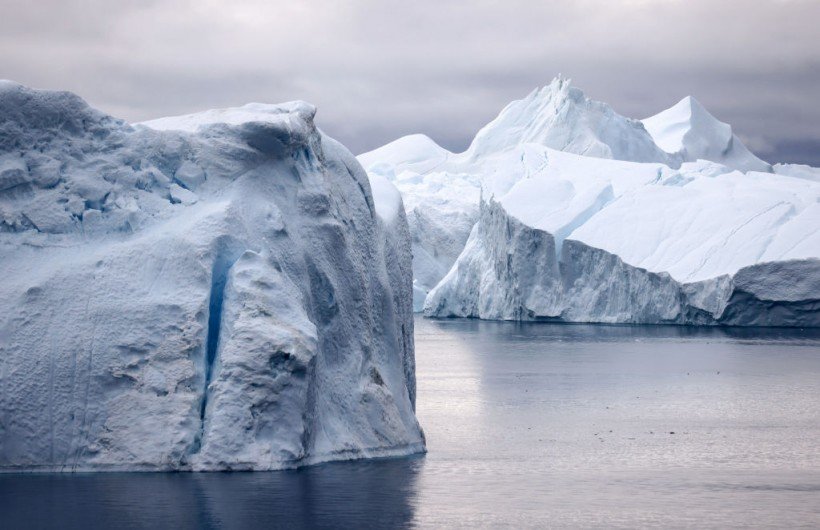Dr. Shengping He and his team have unearthed groundbreaking insights into how the shifting ice dynamics in the Arctic are reshaping winter temperatures worldwide
Dr. Shengping He and his team from the University of Bergen have unearthed groundbreaking insights into how the shifting ice dynamics in the Arctic are reshaping winter temperatures worldwide. Their findings shed light on the intricate interplay between ice, ocean, and climate change, painting a clearer picture of our planet’s evolving climate system.
Unraveling the Puzzle
In recent decades, scientists have been confounded by a curious phenomenon: while the Arctic is experiencing unprecedented warming at a rate three to four times faster than the global average, regions like East Asia have been gripped by unusually harsh winters. The culprit behind this puzzling trend? Shrinking Arctic sea ice.
Over the past forty years, we’ve witnessed a staggering loss of 12.2% of summer sea ice cover every decade. The instinct to connect the dots between dwindling ice in the north and colder winters in the south seems logical, but is it the complete story?
The Influence of Melting Arctic Ice
To disentangle the impact of diminishing sea ice, Dr. He and his team turned to sophisticated climate models. These virtual Earth simulations allowed researchers to manipulate specific variables, focusing on sea ice cover.
By conducting simulations with reduced sea ice while keeping other factors constant, they effectively filtered out the noise of natural variability, isolating the unique effects of sea ice loss on winter temperatures in East Asia. This methodological approach enabled them to distinguish the signal (sea ice impact) from the noise (random atmospheric fluctuations).
Their findings underscore the significant role of dwindling Arctic sea ice in driving the ‘Warm Arctic, Cold Eurasia’ climate mode. However, the natural variability inherent in Earth’s systems can obscure these effects, complicating the picture.
The Emergence of New Winter Ice
The changes unfolding in the Arctic extend beyond mere reductions in ice cover. As temperatures climb, a paradoxical effect comes into play.
Warmer air leads to more open water areas persisting during winter, providing the space for new ice to form. This fresh ice, distinct from the thick multi-year ice rapidly disappearing, possesses different characteristics.
Young ice is thinner and less reflective, absorbing more sunlight rather than reflecting it back into space. This alters heat distribution patterns, the full implications of which are yet to be fully understood.
Dr. He’s team delved into this phenomenon, projecting the future of Arctic ice using their models. They found that under varying emissions scenarios, the extent of new winter ice is expected to continue increasing until around mid-century. However, beyond that point, uncertainty clouds the trajectory.
Global Climate Ramifications
The ‘Warm Arctic, Cold Continents’ effect serves as a poignant example of how climate change is rewriting the rules of our planet’s weather systems. The Arctic functions as a colossal thermostat for Earth, reflecting sunlight and regulating global temperatures.
Yet, as warming temperatures erode sea ice, this reflective surface diminishes, leading to increased heat absorption by the ocean. This disrupts atmospheric circulation patterns, spawning weather anomalies and extremes across the globe.
This effect is just one piece of the puzzle. A warmer Arctic can weaken the jet stream, altering weather patterns and exacerbating extreme events such as heatwaves and cold snaps.
Addressing the Crisis
Addressing the multifaceted impacts of Arctic ice melt and climate change requires a comprehensive strategy:
Individual Action: Embracing energy efficiency, sustainable transport choices, and responsible consumption habits.
Policy Advocacy: Supporting renewable energy initiatives, carbon pricing, and stringent environmental legislation.
Arctic Research Support: Prioritizing funding for Arctic research and fostering citizen science initiatives.
Corporate Responsibility: Encouraging green business practices and transparent environmental reporting.
Public Education: Integrating climate change education into curricula and fostering community engagement.
Conclusion
Dr. Shengping He and his international team’s research represents a significant step forward in unraveling the complexities of the ‘Warm Arctic, Cold Eurasia’ climate phenomenon. Their study provides crucial insights into the direct impact of Arctic sea ice loss on global climate patterns, emphasizing the urgency of continued research to navigate the challenges of our planet’s changing climate.
The study is published in Advances in Atmospheric Sciences.
